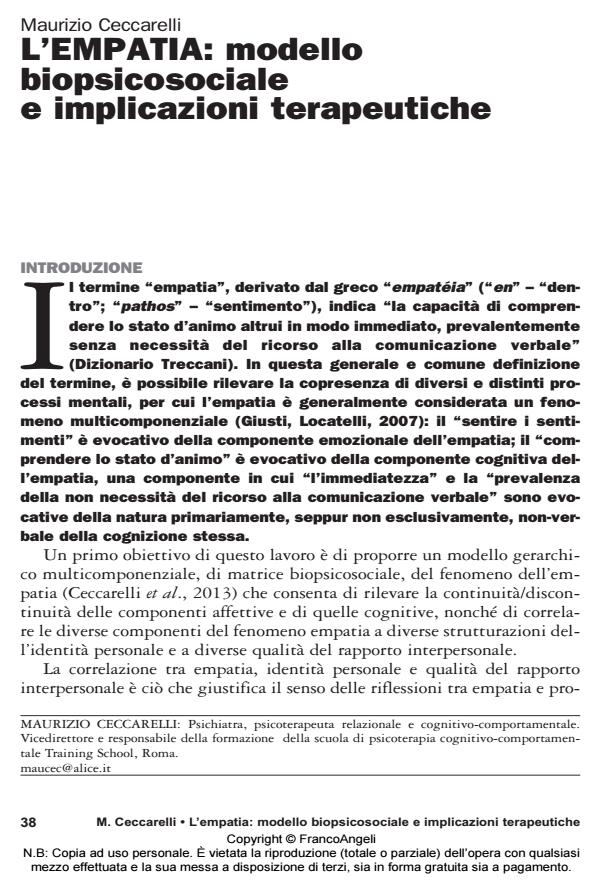Biopsycosocial model and implications for psychotherapy
Journal title PSICOBIETTIVO
Author/s Maurizio Ceccarelli
Publishing Year 2015 Issue 2015/2
Language Italian Pages 22 P. 38-59 File size 138 KB
DOI 10.3280/PSOB2015-002003
DOI is like a bar code for intellectual property: to have more infomation
click here
Below, you can see the article first page
If you want to buy this article in PDF format, you can do it, following the instructions to buy download credits

FrancoAngeli is member of Publishers International Linking Association, Inc (PILA), a not-for-profit association which run the CrossRef service enabling links to and from online scholarly content.
This paper has two main goals: define an empathic theory model and describe the role of empathy in the therapeutic process. The model stems from a hierarchical theory of mental activity based on a biopsychosocial ground. The core of the model assumes that empathy requires affective elements - typical of low-levels mental functions - as well as cognitive elements - typical of high-levels mental functions - finding the maximum expression through the exercise of self-consciousness. The role of empathy in the therapeutic process is examined through the strict correlation between empathic activation and cooperative relationship. In this way the vicissitudes of empathy in the therapeutic relationship are described in close connection with the vicissitudes of the alliances of the therapeutic process. Of these alliances the three main moments - construction, breakage, repair - with direction on the guidelines for their management.
Keywords: Mirroring; Empathy; Hierarchical Model; Biopsychosocial Theory; Cooperative Relationship; Therapeutic Alliance.
Maurizio Ceccarelli, L’empatia: modello biopsicosociale e implicazioni terapeutiche in "PSICOBIETTIVO" 2/2015, pp 38-59, DOI: 10.3280/PSOB2015-002003